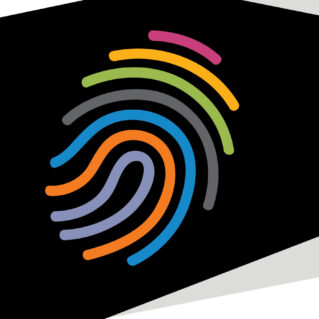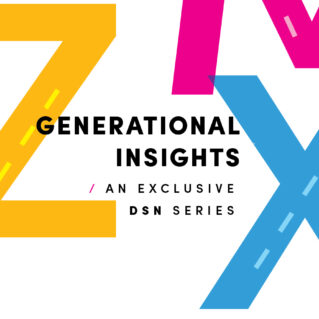What’s Working, What Isn’t and How Digital Is Changing The Game.
BEFORE SMARTPHONES were in every pocket and tablets became as common as the personal computer, sharing the direct selling opportunity meant hosting an in-person event. Potential customers had to be local or willing to travel, and the main attraction was either a talking head at the front of the room or a recorded presentation listened to on a cassette player or watched on the living room TV and VCR that everyone gathered around.
Back then, customers based their purchasing decisions off what they learned from these talks or recordings, but all of that is ancient network marketing history now. While the inhome party is still effective for companies with tactile products that are dependent on the user experience, like cosmetics or clothing, it now must be coupled with digital events or marketing to compete for scale. For some companies, the cumbersome in-person pitch has become all but extinct.
The Subtle Sales Pitch
When direct selling and in-home parties went hand-in-hand, customers knew a sales pitch was coming. It was scribbled on their desk calendars and planned in advance. Today, the opportunity pitch is often so sleek that potential clients don’t even realize it’s happening.
“A lot of the presenting is done prior to them wanting to or knowing they want to buy a product,” says LifeVantage President and Chief Executive Officer Darren Jensen. “A lot of people begin following you on Facebook or Instagram and become involved in your life. The way [presenting] has changed dramatically is it has moved to the more raw, edgy everyday life. They learn from watching your life on social media.”
Distributors are now micro-influencers who seamlessly share curated content, their daily lives, products and business venture opportunities, without sounding like a commercial that today’s consumer can see from a mile away and intuitively dodge. In fact, today’s direct selling presentations often don’t look like a presentation at all. They can happen when a distributor goes live with a makeup tutorial and chats about how the business behind her favorite skincare products helped her pay off her student loans, or when a mom posts a quick story about her morning routine and includes the new vitamin-infused powder that’s helped her lose weight and–oh, by the way–also earn a few bucks. It’s usually followed up with a quick “DM me if you want to know more.” No high-pressure sales pitch. No information-laden flipchart. Just a trusted connection sharing a product or business they love.
It’s the same word-of-mouth advertising direct selling is known for, but souped-up, shortened to capture attention spans that are used to flipping through dozens of videos and pictures a day, and sandwiched in between updates about family vacations and the hot new sushi bar in town.
“ The way [presenting] has changed dramatically is it has moved to the more raw, edgy everyday life. They learn from watching your life on social media.”
— Darren Jensen, President and CEO, Life Vantage
Casual Presenting Winning The Day
Direct selling companies are learning to sink their teeth into this more casual presenting style by nixing the stuffy board room vibe and opting for entertaining resource videos that distributors can share with their followers. Following in the footsteps of Google and Facebook, direct selling companies like Prüvit, who use animation like a cartoon campfire to explain ketosis, are finding that animated videos can explain complex topics in a lighthearted fashion that connects in a way ordinary presenters can’t.
This casual presenting style only works if a dedicated following of fans or friends are listening, and distributors with LifeVantage have discovered how to leverage social media for this purpose as well. By utilizing the Ad, Tag, Message approach (or ATM), distributors gain access to a massive warm market simply by making friends through social media. By following this ATM method, Jensen says, average-sized teams within his company are bringing in on average 1,500 new customers and distributors a month.
The Magic Blend Of High Touch and High Tech
Direct selling presentations have evolved from live meetings in a living room or rented hotel conference room that were often cost-prohibitive, to links to recorded presentations available on YouTube or a company website that could seem cold. “The advantage of the hotel room was the presenter could tailor the presentation to the audience, take questions and have interactivity,” says SUCCESS Partners Senior Vice President of Business Development Noah Westerlund. “You lost some of that with YouTube and DVDs and left the prospect out there on their own.”
Enter Zoom, an online conferencing app that has become a go-to resource for distributors. The cost to host a conference is negligible and free to join as a guest, but most importantly, it provides the collaborative, live feel that’s often missing in high tech presentations. By facilitating real-time conversations between participants and including them, prospective customers feel like they’re on site even though they may be watching from their car or couch. Facebook Live is another resource trend connecting followers and potential customers. “We’ve embraced the high tech, but sometimes in doing so we forget the high touch,” Westerlund says. “This is a high touch business; it’s a relationship business—it always has been and always will be.”
“We’ve embraced the high tech, but sometimes in doing so we forget the high touch. This is a high touch business; it’s a relationship business–it always has been and
always will be.” — Noah Westerlund, SUCCESS Partners Senior Vice President of Business Development
Meeting People Where They Are At
The in-person meeting hasn’t been ditched altogether, but successful distributors are learning how to enhance that first touch and make it more effective and efficient. With Zoom and other developing platforms like it, teams can build their businesses without requiring more of potential customers than they are willing to give, by meeting people where they’re at and respecting their time, and distributors can achieve a cross country tour that used to require months of planning and execution in a single evening without leaving their desk. Technology can help business builders reach more people and reach them quicker, but the tried and true methods of knowing how to move people to action and connect on an emotional level will always be relevant.
“Who knows what the next presentation software will be, but here’s one thing I do know: one of the dangers of technology is we seem to think it’ll do it for us,” Westerlund says. “Look at how technology can facilitate those relationships but don’t look for technology to replace those relationships.”
Survival Means Simplifying
As Darren Jensen and his LifeVantage team were designing their internal artificial intelligence, they looked at who was doing the lion’s share of recruiting for their company and discovered that those making $350 per month or less accounted for 70 percent of the company’s enrollments, and those making $2,500 or less per month brought in 92 percent of all new enrollments.
The movers and shakers, they found, weren’t the elite high earners; it was the masses of people working it as a side hustle. Making tools—especially mobile presentation tools—that were simple to use became a high priority.
This urgency to simplify is one reinforced by Jensen’s friends in other industries, like leaders at Airbnb, Amazon and SC Johnson, who see direct selling positioning itself as too difficult, with confusing presentation tools and compensation systems that are too complex.
“Sometimes we get so myopic in our own industry,” Jensen says. “Amazon and Airbnb are entrepreneur creators like us. We’ve got to up our game. If we don’t, we may be beat at our own game.”


